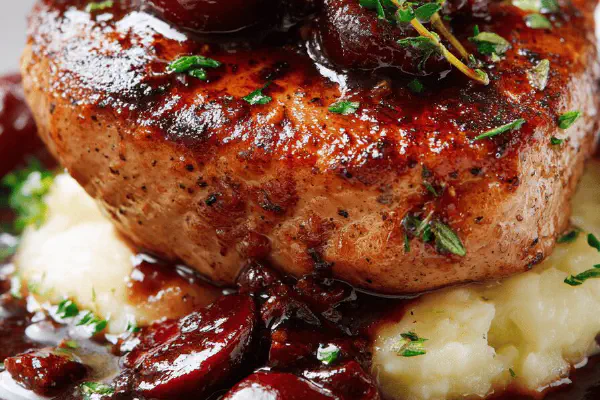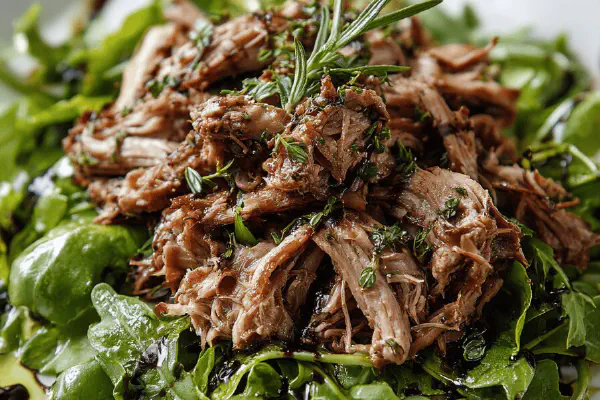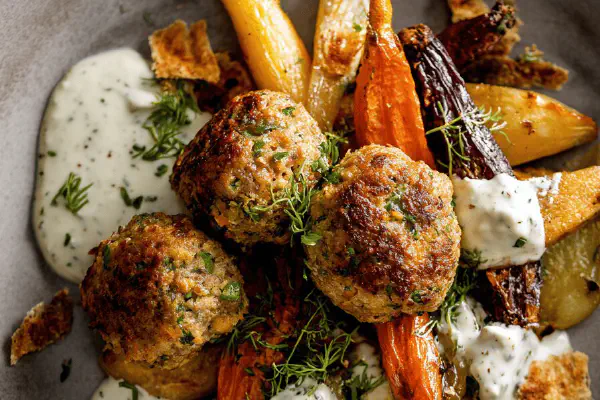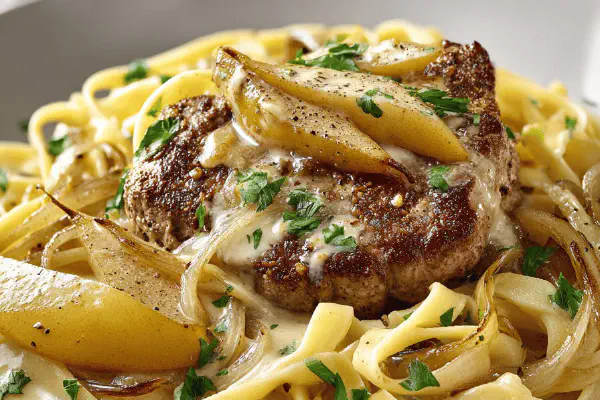Pork Medallions Cherry Spice

By Emma
Certified Culinary Professional
Ingredients
- 1 pork tenderloin approx 500 g
- 70 ml all-purpose flour
- 200 ml jarred sour cherries, drained
- 200 ml reserved cherry juice
- 50 g unsalted butter divided
- 20 ml olive oil
- Salt and cracked black pepper
- 1 large shallot minced
- 1 clove garlic, minced
- 60 ml diced parsnip
- 110 ml dry red wine
- 2 medium cinnamon sticks
- 400 ml chicken stock
- 60 ml ground five-spice powder
- 1 fresh thyme sprig
About the ingredients
Method
- Slice pork into six 2 cm thick medallions. Pat dry. Lightly flatten medallions with palm to even thickness—key for even cooking. Dredge in flour, shaking off excess to avoid gummy crusts. Drain cherries separately, reserve liquid carefully.
- Heat skillet over medium-high. Add half butter with olive oil, shimmering hot but not smoking. Sear medallions 3-5 minutes per side, aiming for light browning and slight firmness—medium rare depends on thickness. Salt and pepper towards end. Internal color should hold faint blush—not raw but tender and juicy. Remove, tent with foil to rest—carryover cooking important to keep moist.
- Same pan, reduce heat to medium. Toss in shallots, garlic, and parsnips. Stir gently—use wooden spoon—soften till translucent, about 5-7 minutes. Avoid browning here; want mellow sweetness, not bitter char. Deglaze with red wine and cherry juice. Scrape browned bits stuck to pan—flavor gold. Add cinnamon sticks for warm spice punch. Reduce liquids down to near syrup consistency, watch bubbles slow and thicken—aroma fills kitchen, signals next step.
- Pour in chicken stock, sprinkle in five-spice, and drop thyme sprig. Simmer gently; bubbles slow and fewer. Reduce to about two thirds original volume—sauce thickens, layers concentrate. Taste and adjust salt, hint of pepper. Remove solids by straining or fish out cinnamon and thyme. Return sauce to heat, fold in cherries for one minute infusion, then swirl in remaining butter off heat to gloss and enrich texture. Whisk briskly for emulsification—creates silky mouthfeel.
- Plate. Spoon sauce over warm pork medallions. Sauce clings, shiny and aromatic. Serve with steamed seasonal veg or fluffy rice—both soak up nuances without overpowering. Remember, carryover and resting time critical—jump to plating too soon and juices escape. Medallions should be tender, moist, with sauce balancing fruit brightness and spice warmth.
- If no chicken stock, use good quality vegetable broth or dilute demi-glace. Parsnips replace carrots well but keep cooking time close. Cinnamon replaces star anise for gentler spice; fresh thyme gives brightness missing in dried bay leaves. Flour dusting prevents proteins drying out and helps sauce stick. Avoid overheated oil; pans too hot burn butter, ruining sauce finish.
Cooking tips
Chef's notes
- 💡 Dry pork well before flouring. Wet surface yields soggy crust; flour sticks better dry. Flour coating protects meat moisture during sear, prevents drying. Don’t overload pan or medallions steam, lose crust. Use butter plus olive oil mixture for balanced sear. Butter alone burns fast; oil tames heat but sacrifices butter color.
- 💡 Sear over medium-high but watch closely. Medallions 2 cm thick need 3-5 minutes per side. Flip once crisp crust forms—avoid poking or pressing. Carryover cooking happens in rest stage under foil tent. Remove pan from heat when faint blush inside, not raw but tender. Fat loss minimized by resting gently covered, crust stays crisp.
- 💡 Deglaze pan with red wine, cherry juice after veggies soften translucent. Avoid browning shallots and parsnips too much or sauce gains bitter note. Reduction to syrupy consistency is sensory: bubbles slow, thick coating on spoon back, aroma intensifies. Cinnamon sticks add warmth but not overpower; remove before plating or rustic textures persist.
- 💡 Add chicken stock after initial reduction, sprinkle five-spice powder sparingly. Strong spice—too much masks subtle cherry, thyme freshness. Simmer gently, reduce to two-thirds volume. Taste often, salt adjusts late stage as flavors concentrate. Strain solids or pick out cinnamon and thyme sprig to avoid fibrous bits in sauce.
- 💡 Finish sauce off heat by whisking in cold butter in small pieces for silky glaze. Avoid overheating to prevent sauce breaking or oily separation. Adding butter cold emulsifies sauce, providing mouthfeel and shine. Fold in drained cherries last minute for warmth without softening fruit too much. Serve immediately with rice or steamed veg that absorb sauce nuances.
Common questions
Can I substitute chicken stock?
Yes. Use vegetable broth or diluted demi-glace. Keep cooking time longer to build richness. Stock type changes flavor weight, lighter stock needs longer simmer. Adjust seasoning after reduction to balance taste.
What if pork is thicker?
Adjust sear time up or down. Thickness changes carryover cooking—too thick means longer rest needed. Avoid overcooking by watching flesh color, feel more than timer. Use thermometer if unsure, target 60-63 degrees C warm medium rare.
Why no overbrowning veggies?
Bitter char ruins sauce base sweetness. Cook shallots and parsnips low-medium heat till translucent, soft. Flavor extraction gentle, not caramelized. Prevent burnt taste by stirring often, moderating heat. Allows better balance of aromatics with spices and fruit acidity.
How to store leftovers?
Cool quickly, store airtight in fridge max 2 days. Sauce thickens on cooling, loosen with splash water or stock. Reheat gently in pan, avoid microwave overheating. Freeze optional but sauce texture changes; thaw slow for best results.



